The image of the Mother of God is widespread in Orthodoxy: she is considered to be the helper of people, the intercessor before the Lord, and people often want to capture the image with their own hands. Many craftswomen would like to use beads, but they face the question: is it possible to embroider an icon in this way? The Church does not forbid it, but it is advisable to follow some rules.
Features of working with beads
Beads are small balls or cylinders with a through hole. They can be glass, plastic, metal, wood, made of rhinestones or stones, such as pearls. Most often, beads are used for embroidery based on a pattern printed on canvas: an image in the form of squares is transferred to the fabric, each square is a bead. This is the simplest and most popular option.
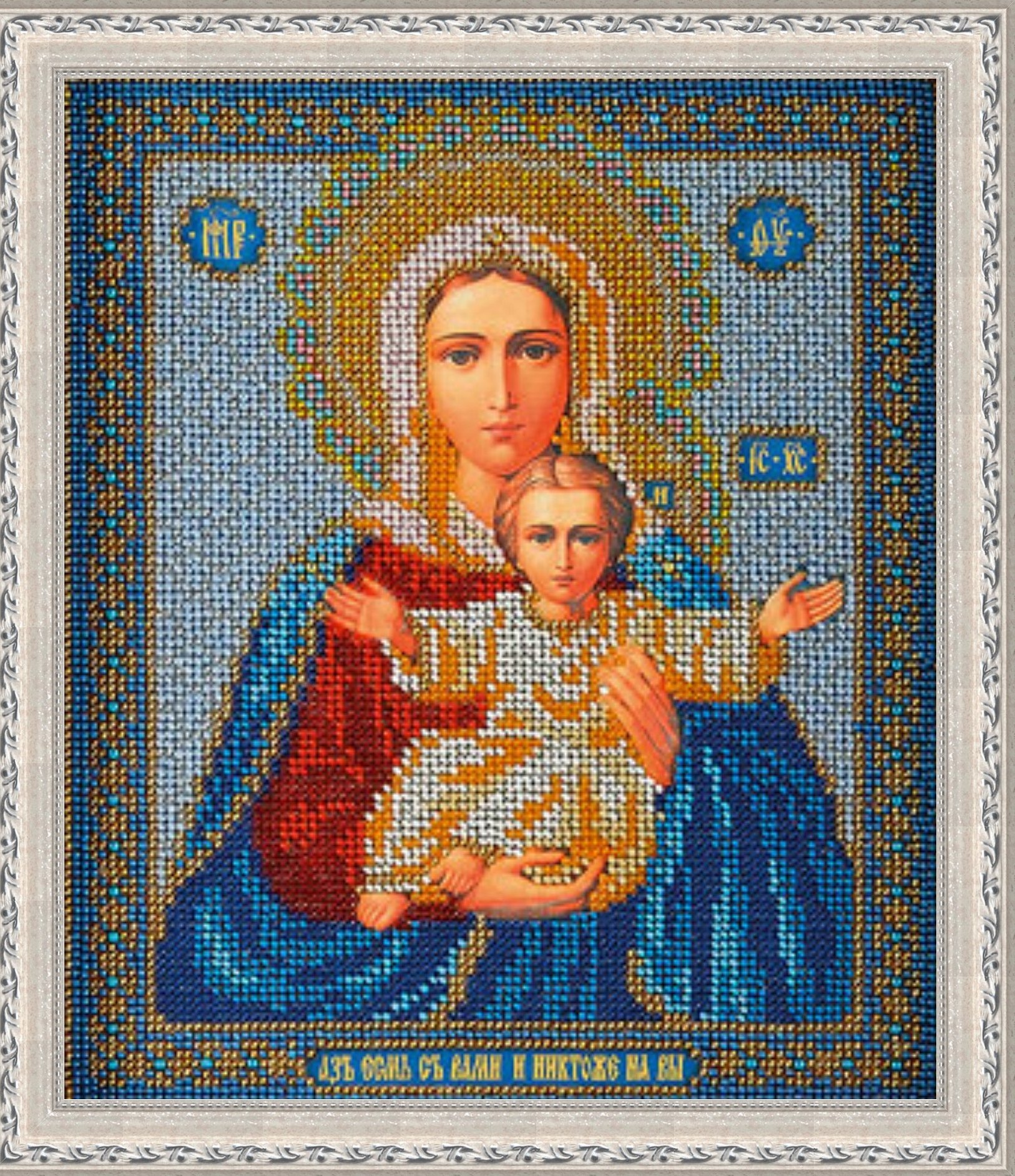
For embroidery you will need:
- Fabric: durable, non-fading, preferably dirt-repellent. You can also use a special canvas, such as Aida by Zweigart or inexpensive sets by Kroshe. Canvas is a thick cotton fabric with holes of different sizes (depending on the number of the canvas itself). Thanks to the same size of the holes, the work will be even and neat, and the variety of colors will allow you to choose an inconspicuous base.
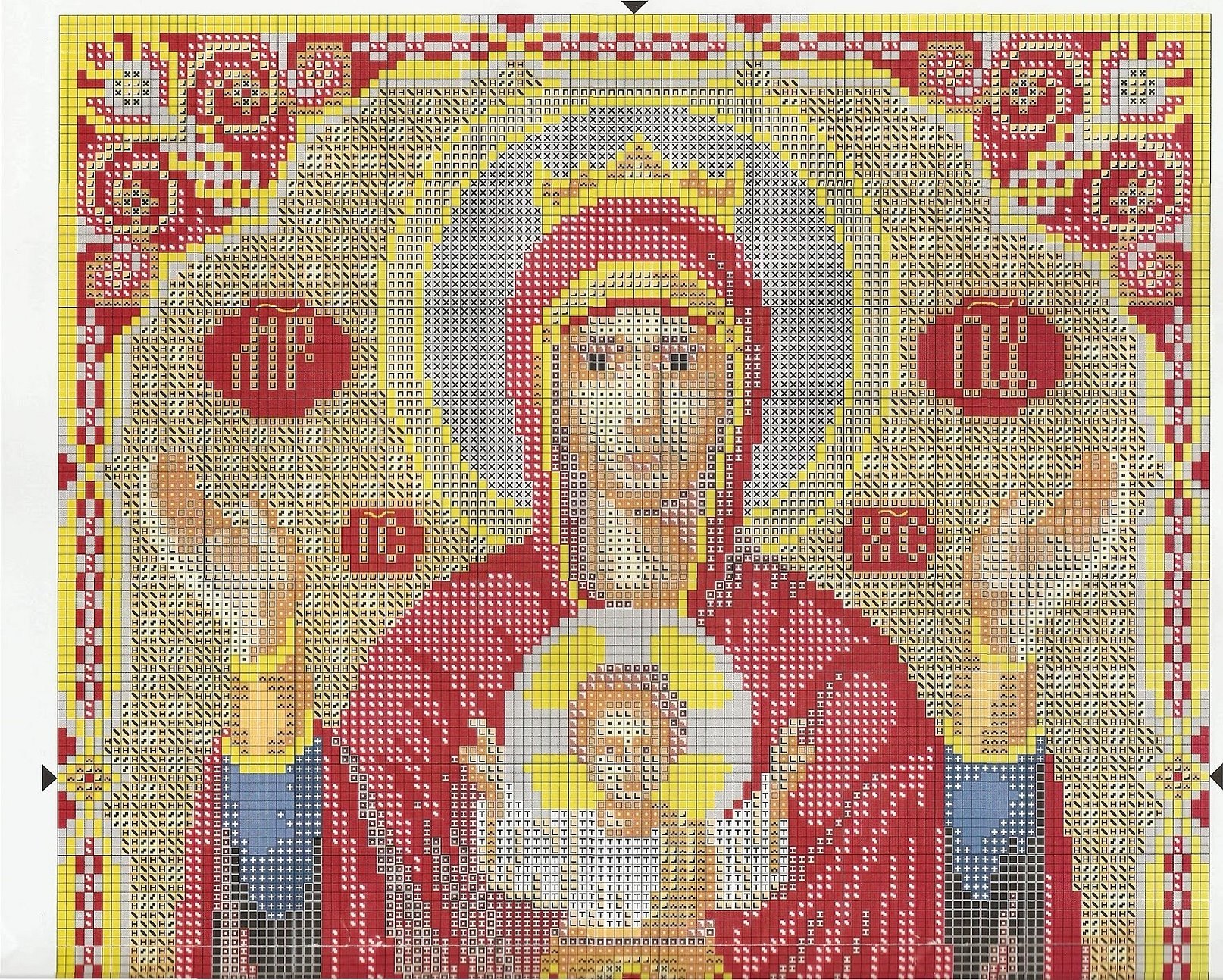
- Threads: their color depends on the color of the canvas and the beads themselves.
- Needles: You will need thin needles with a small eye that will easily pass through the hole.
- Beads: their color and quantity depend on the embroidery itself. The beads should be the same size, well-colored and with even holes. It is better to pay a little more and choose a more expensive option, since beads of different sizes will not be able to fit together and will ruin the work.
Types of iconography of images of the Virgin Mary
It is believed that the first icon of the Mother of God was painted by the Evangelist Luke, but the oldest found images date back to the 2nd-3rd centuries AD. They were discovered in the Roman catacombs.
Important! The traditional clothing of the Virgin Mary consists of a long tunic and a purple maphorion (a veil covering the head and shoulders of a married woman), decorated with three stars.
There are several main types of images of the Holy Mother of God on icons:
- Oranta: "praying" or "sign". The Virgin Mary stands facing the viewer, her hands are raised and turned with palms towards the viewers - this is a gesture of intercessory prayer, she prays to the Lord for the people who have turned to her. She was painted both full-length and from the waist up. The entire pose of the mother of Christ is majestic and static, it is symmetrical. Often the Child himself is depicted in a circle on her chest, less often the Virgin Mary is depicted alone. One of the versions of the image became the icon "Inexhaustible Chalice".
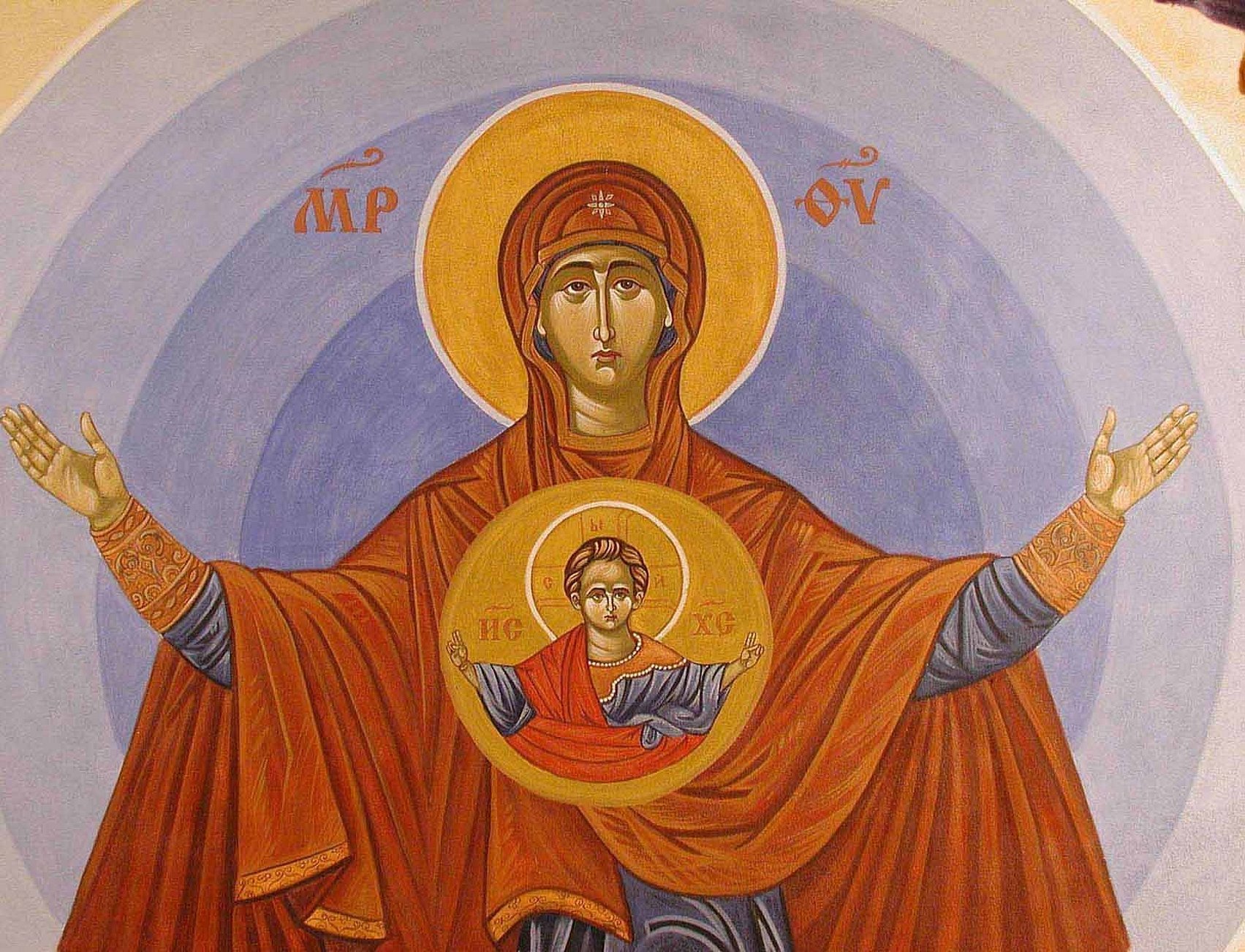
- Hodegetria: "guide", known in Russia as Kazanskaya and Smolenskaya. The Virgin Mary sits sideways and looks at the viewer, holding the Child with her left hand and pointing at him with her right. Christ blesses with his right hand, holding a book or a scroll in his left, and occasionally a cross. The main thing on the icon is the Child himself, the King and Judge who came into the world: his back is straight, his gaze is calm. He knows his destiny and is submissive to it.
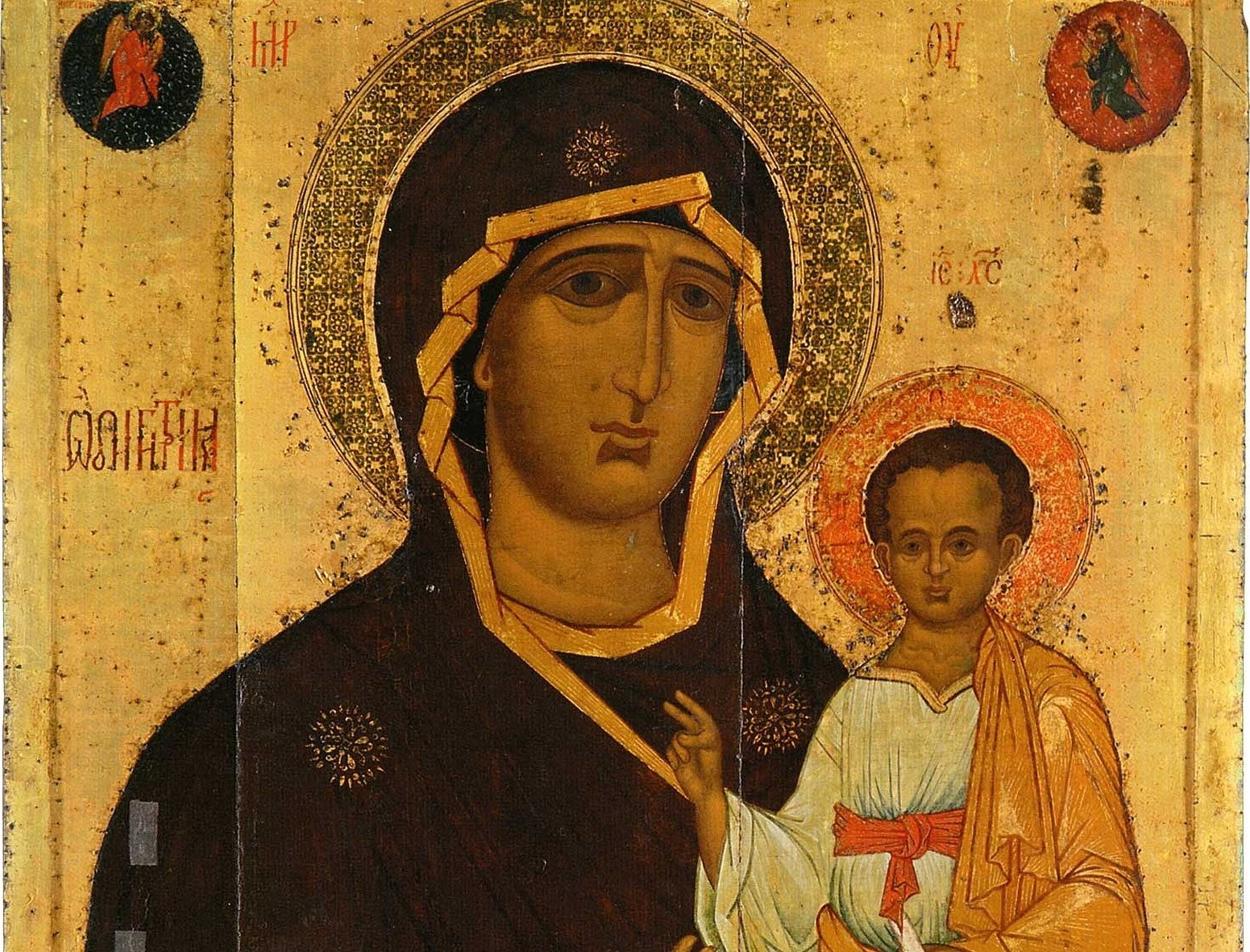
- Panachranta: "All-Merciful, All-Queen". The image is close to the Hodegetria, but the Mother of God sits on a throne, the Child is on her knees in the center.
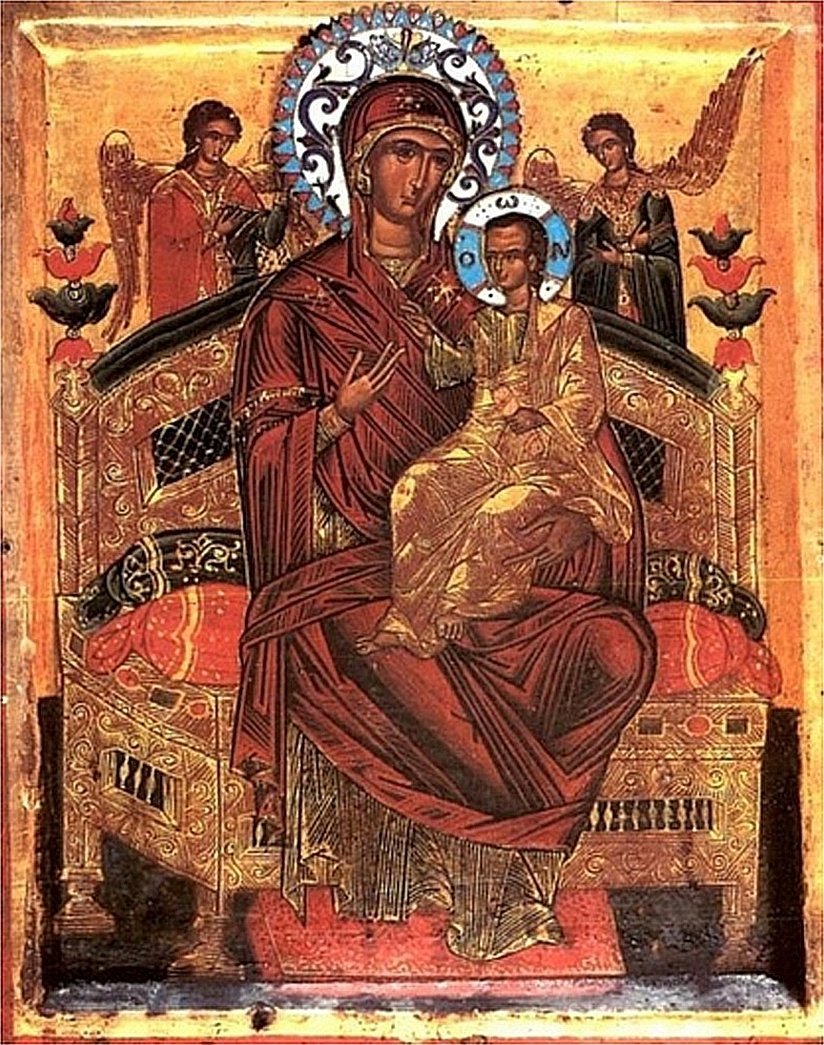
- Eleusa: "merciful", "affection". In Russia it is known as Vladimirskaya and "Seeking the Lost". Mary looks at the viewer and hugs the Infant, who is clinging to her. He embraces his mother, looks at her. The main theme is the mother's love for her child, the desire to protect the child.
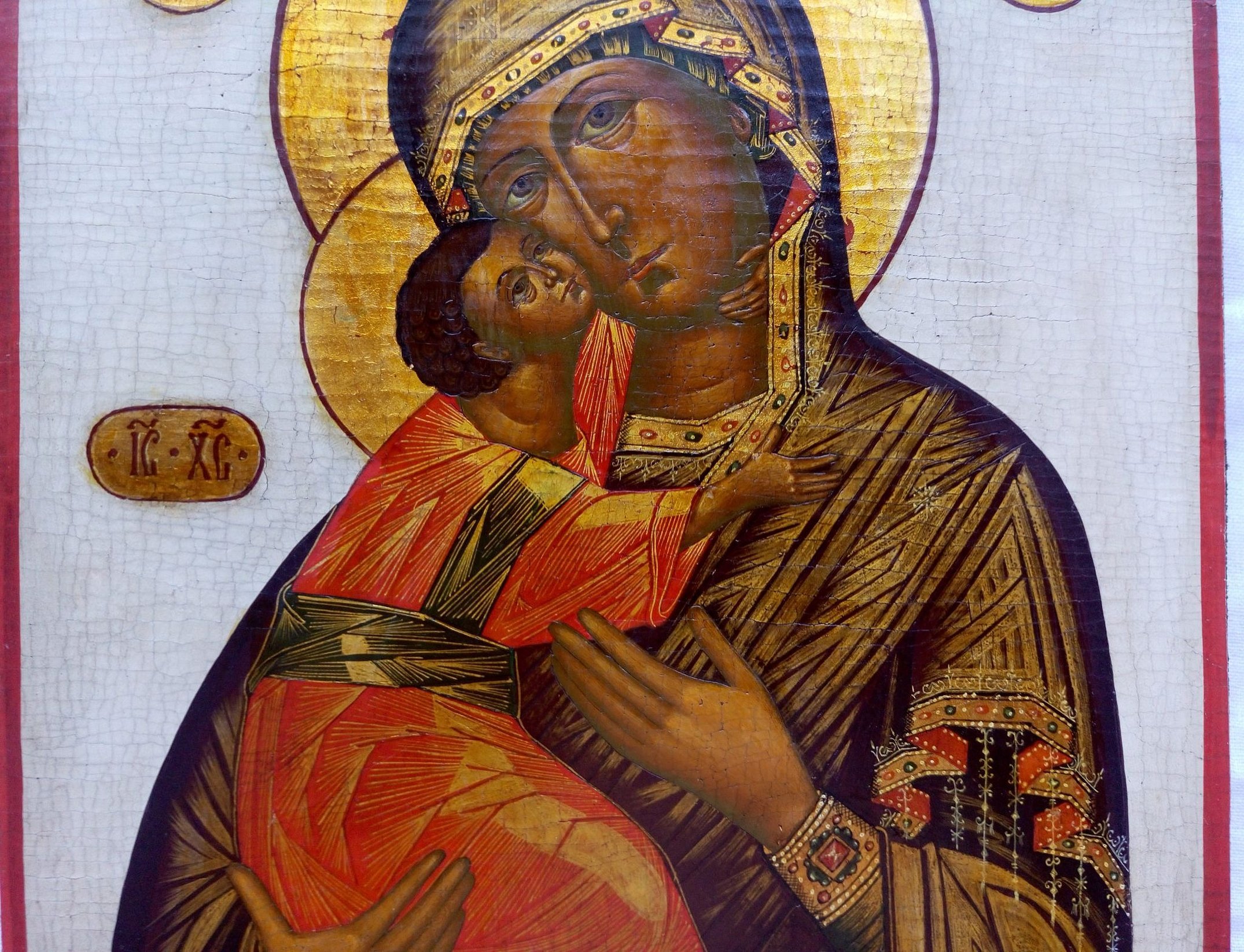
- The Burning Bush: literally "unburnable bush". The idea comes from the Old Testament legend of the Lord appearing to Moses as an unburnable bush. Mary Oranta was depicted as a burning bush, before which Moses bowed. Later, in the 16th century, the bush was replaced by an octagonal star, and the Virgin Mary began to be depicted with the Child in her arms.
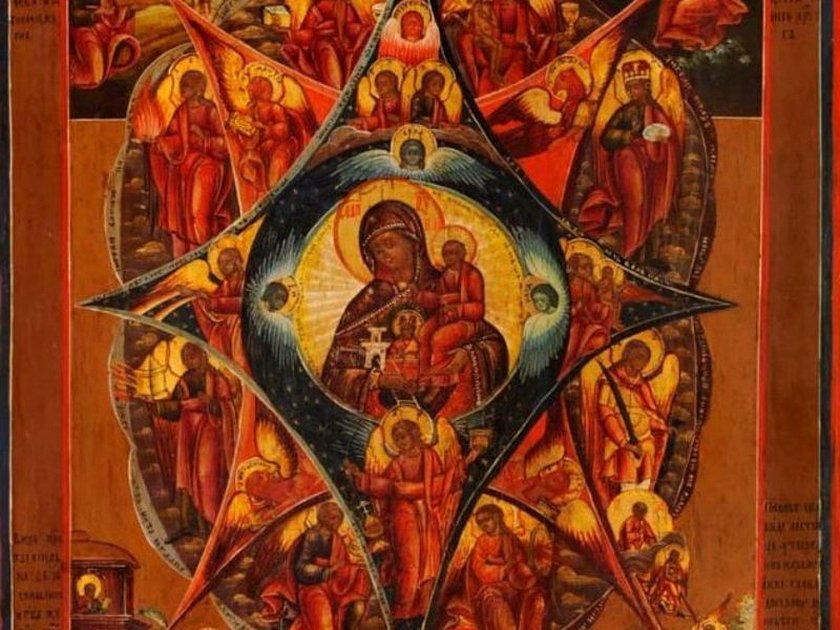
- Agia Soros (or Agia Soros): "Intercessor", literally "Holy Cancer". This is a personal icon, Mary is depicted alone, full-length or chest-length. She is turned to the viewers at ¾, her hands are folded in prayer, sometimes she holds a scroll. The Mother of God protects those who turn to her in prayer, acting as a mediator between them and God.
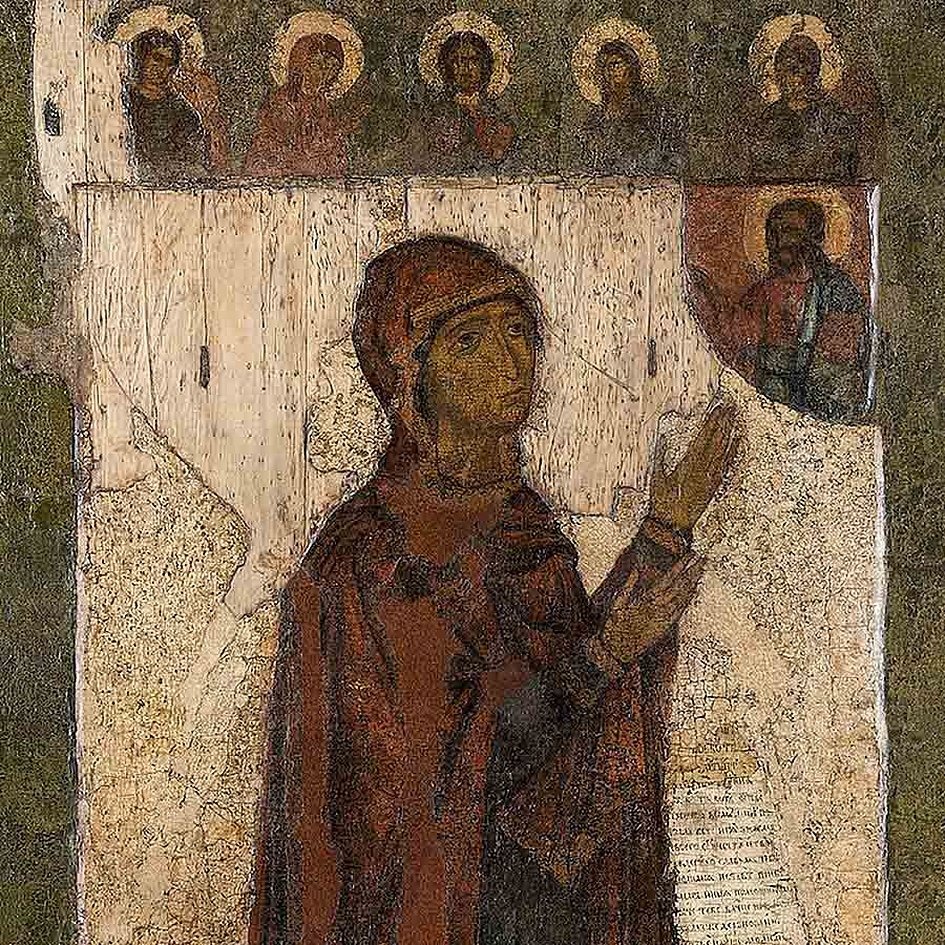
These are the main types of images, on the basis of which the "younger" ones were created. When choosing a pattern for bead embroidery of an icon, it is worth paying attention to the symbolism of each type: for example, Oranta can protect before God, it can also be hung in a room or corridor to protect the house.
Can everyone embroider icons with beads?
This question worries many needlewomen: how religious a person should one be, should one receive a blessing, can one embroider an icon for oneself?
The Church does not prohibit depicting saints in any way possible, including beadwork. However, there are several prohibitions that should not be violated:
- Embroider for sale. Embroidery can be used as a legacy or a gift;
- To distort an image with malicious intent;
- Use lots of grey and black;
- Embroider in anger;
- Embroider during important church holidays and on Sundays;
- Women should not work during their period.
Important! In churches, all images of icons made with threads or beads are prohibited; only icon painting is allowed there.
Since icons are an important religious symbol and not just a simple picture, it is recommended to follow some rules:
- Get a blessing from the priest before starting work and find out whether he will bless it upon completion, and also check the correctness of the scheme;
- Before each start of work it is necessary to read a prayer. You can also pray during the process, especially to drive away bad thoughts;
- If desired, one can fast until the work is completed, and it is advisable to attend church regularly;
- In a sewn-on (fully embroidered icon) the hands and the Face are embroidered last, the work is completed by embroidering the eyes. But more often the hands and the face remain painted;
- A beaded icon must be consecrated in a church or at least receive a blessing if there are errors in the icon (for example, there are Catholic symbols).
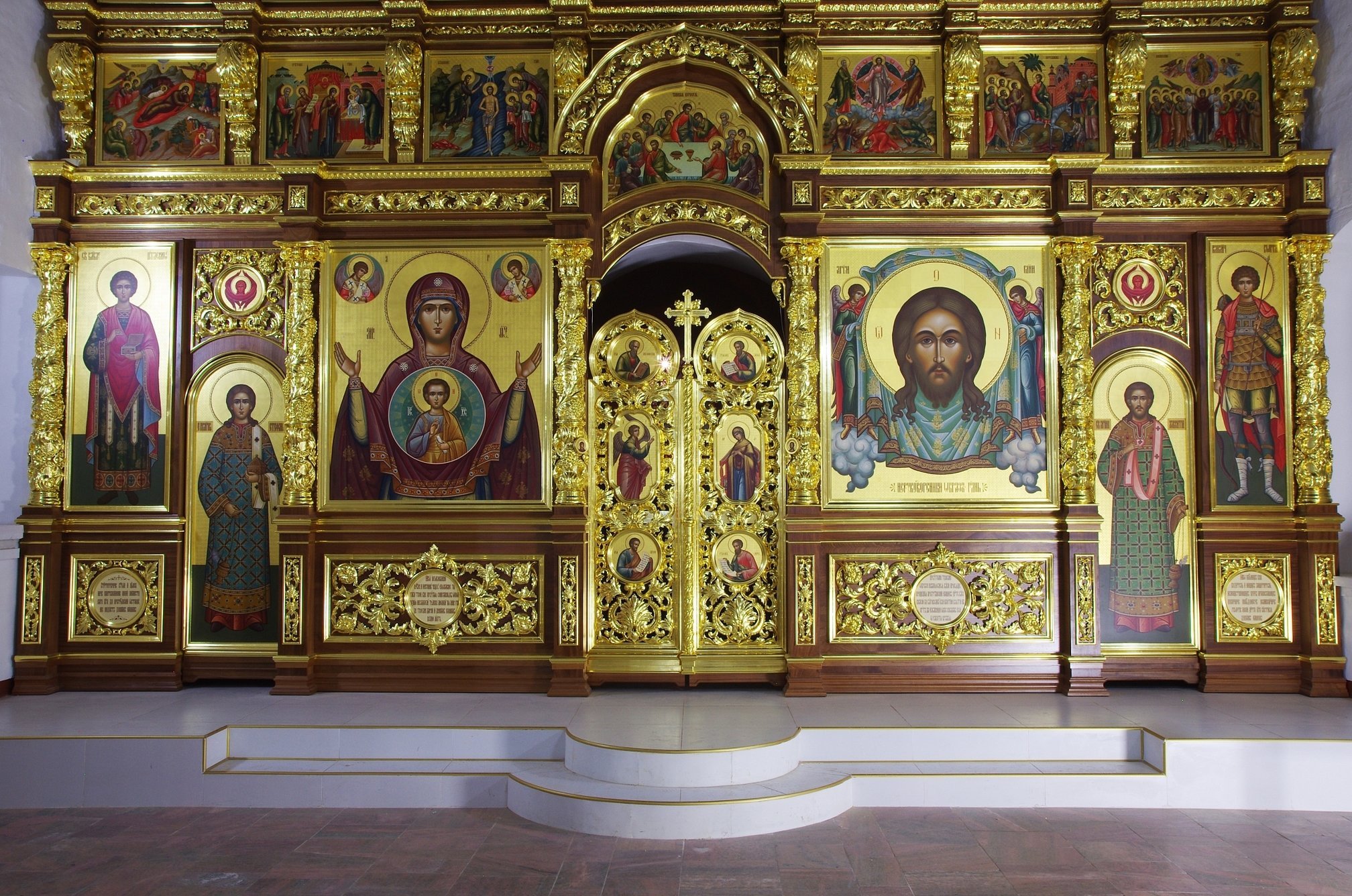
Why are icons embroidered using ready-made patterns?
First of all, this is done to avoid mistakes. An icon is not just an image, but a sacred symbol for many, in which every detail is important. For example, the Virgin Mary on Orthodox icons usually wears clothes of red and brown colors, on Catholic icons - blue and light blue shades. Due to ignorance, the master can make a mistake and embroider an ordinary non-religious picture instead of a holy icon.

It is important to remember that ready-made patterns may contain errors, and therefore before starting work you need to show the drawing to the priest and ask him to correct inaccuracies if necessary. However, if the embroidery is not planned to be consecrated and will not be considered a holy image, this can be omitted.
Icon patterns for bead embroidery
Kits for work or individual patterns can be bought in a sewing supplies store, downloaded from a website or developed by yourself using a special program that will convert the selected image into "squares". The store usually sells not a paper pattern, but fabric (artificial satin or polyester) with a pattern applied to it and a list of the necessary beads and their quantity. You can use them to make icons with beads with your own hands - embroidery kits with step-by-step instructions are well suited for beginners.
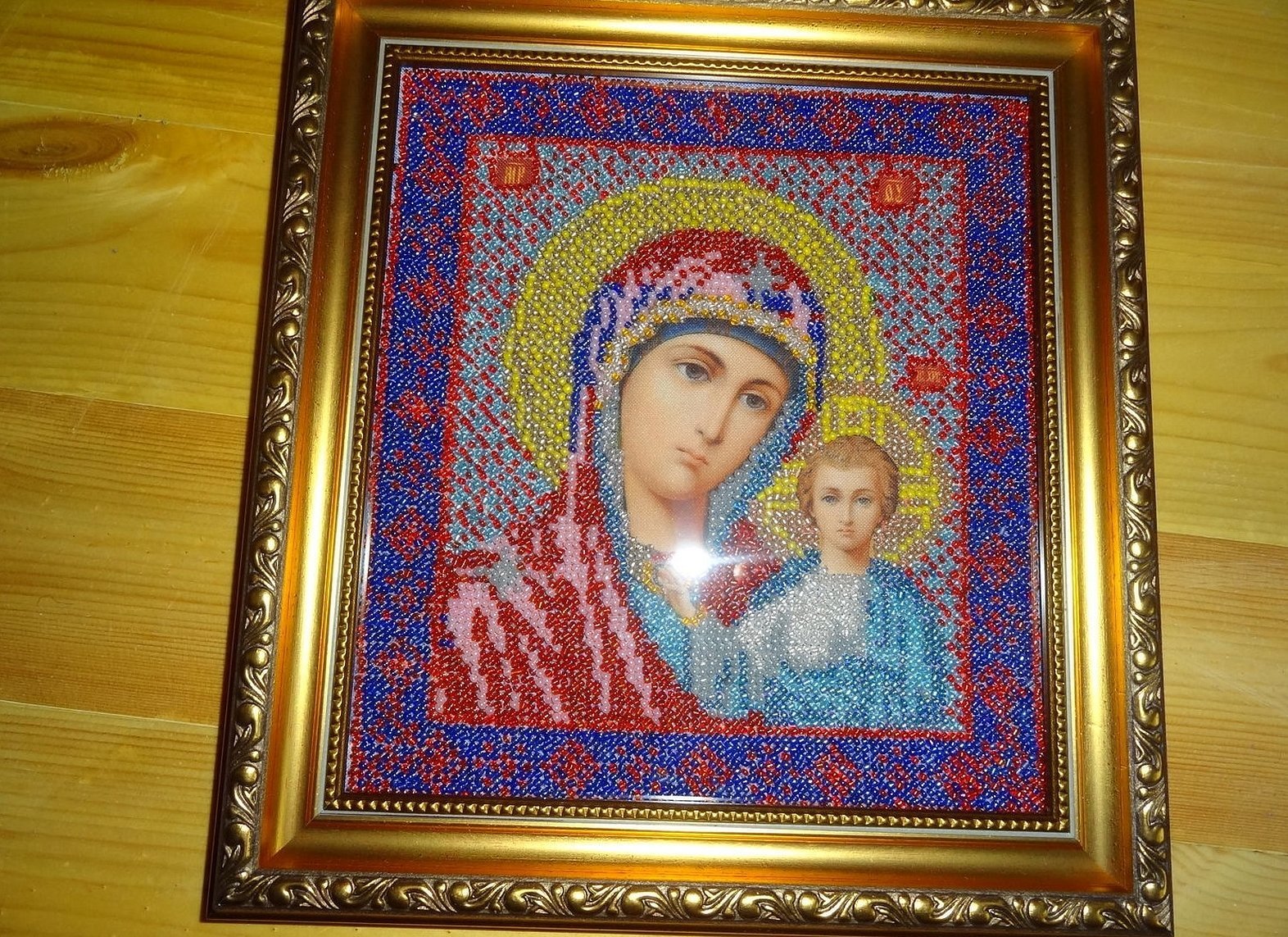
Some patterns and fabric can be purchased in specialized Orthodox shops, where you can order home delivery. Embroidery is usually not sold in churches and monasteries. It is better to buy the one you like elsewhere and have it blessed.
Having decided to embroider an icon of the Mother of God with beads, craftswomen often doubt whether it is worth doing, whether the work will become an ordinary drawing, whether it can be given as a gift? To avoid such doubts, it is necessary to receive a blessing for sewing from a priest in advance and consecrate the work upon completion - this is what icon painters do before starting to paint.




